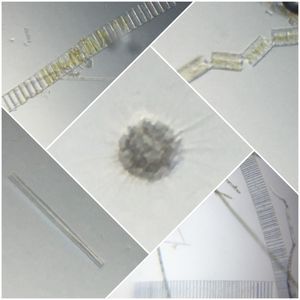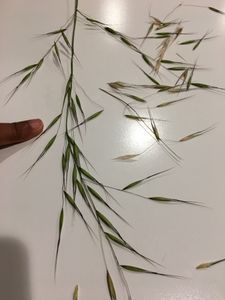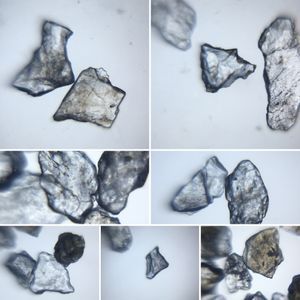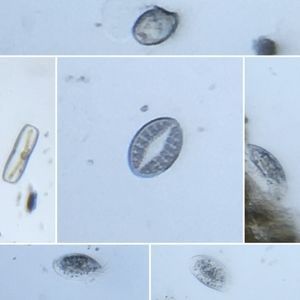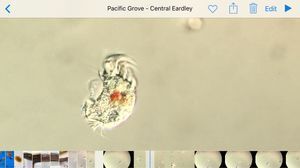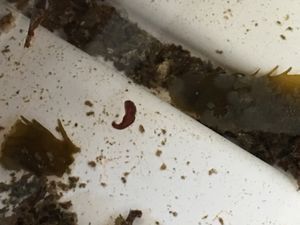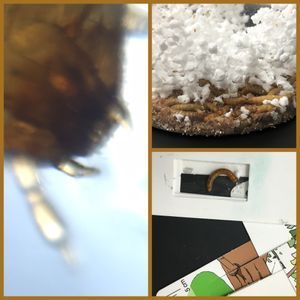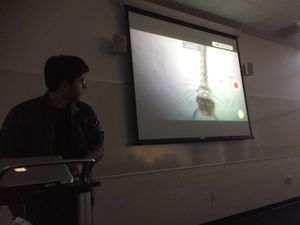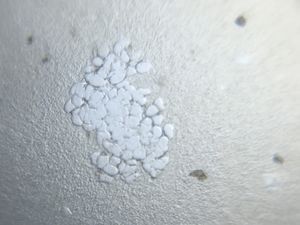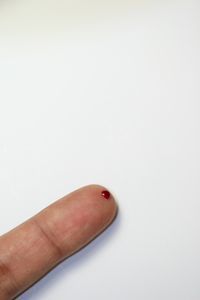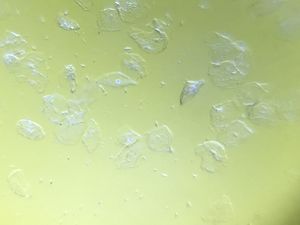As a scientist, why i’m excited about the Foldscope
 Oct 25, 2015 • 5:42 PM UTC
Oct 25, 2015 • 5:42 PM UTC Unknown Location
Unknown Location 140x Magnification
140x Magnification Unknown
Unknown
Saad Bhamla
Learn about the author...
32posts
11comments
2locations

I just posted an article on my personal blog
Re-posting here for the microcosmos community to enjoy.
————–
Re-posting here for the microcosmos community to enjoy.
————–

The foldscope is a ultra-low cost microscope (less than a dollar) that you can literally carry anywhere in your pocket. It was invented in the PrakashLab at Stanford.
If you google it, you will find a TED talk by Manu Prakash, as well as a National Geographic talk, which explains how the Foldscope is being utilized for medical diagnostics and science-education, respectively.
There is a reason I am not posting those links in this post. This post is NOT about global health or science-education for children. This post is about the utility of the Foldscope for scientific discovery by a young scientist (like myself) or even a seasoned faculty.
So, here are 3 reasons, how the Foldscope is going to be a valuable tool for any scientist:
1. Parallel time-lapses:
Specially for biology, nature operates on longer time-scales to develop for a simple cell to a complex multi-cellular organism. Imagine having a shared-expensive scope in the lab, and you set your time-lapse experiment for 24-72 hours. Not only are others prevented from using the microscope- if the experiment doesn’t work for whatever reason, you have to re-do the entire experiment.
If you google it, you will find a TED talk by Manu Prakash, as well as a National Geographic talk, which explains how the Foldscope is being utilized for medical diagnostics and science-education, respectively.
There is a reason I am not posting those links in this post. This post is NOT about global health or science-education for children. This post is about the utility of the Foldscope for scientific discovery by a young scientist (like myself) or even a seasoned faculty.
So, here are 3 reasons, how the Foldscope is going to be a valuable tool for any scientist:
1. Parallel time-lapses:
Specially for biology, nature operates on longer time-scales to develop for a simple cell to a complex multi-cellular organism. Imagine having a shared-expensive scope in the lab, and you set your time-lapse experiment for 24-72 hours. Not only are others prevented from using the microscope- if the experiment doesn’t work for whatever reason, you have to re-do the entire experiment.

Foldscope: Live imaging of stomata in tulips. Full post here . Now, imagine ten of these one dollar Foldscopes. All you need to do now is buy a few cheap webcams , old iPhones/androids or even a raspberry Pi , and you can set ten experiments in parallel at either 140X or 500X magnification. In the PrakashLab, we do this routinely. This not only improves our chances of getting results, but we get our triplicates in one shot. And if we mess up, we have additional data. For a young faculty member that is just up and getting to go, imagine not having to spend the entire start-up package buying 5 microscopes for your lab.
This advantage is not exclusive to biology, even if you do microfluidics, you can get unto 240fps with an iPhone and record high-speed videos of your fluidic chamber, as this resourceful undergrad researcher at MIT has done (her lab didn’t have enough microscopes for all the undergrad researchers in the lab)
This advantage is not exclusive to biology, even if you do microfluidics, you can get unto 240fps with an iPhone and record high-speed videos of your fluidic chamber, as this resourceful undergrad researcher at MIT has done (her lab didn’t have enough microscopes for all the undergrad researchers in the lab)

Foldscope being used for microfluidics experiment by undergrad researcher at MIT. Full post here .
2. Dark-field:
This is an amazing illumination technique that enhances the contrast in your images. This is particularly useful for transparent, live samples. See this video below of a Artemia Salina taking its first swim that I made a few days ago to get a sense. You can essentially get dark-field modality on a Foldscope for free . At no extra cents!!
This is an amazing illumination technique that enhances the contrast in your images. This is particularly useful for transparent, live samples. See this video below of a Artemia Salina taking its first swim that I made a few days ago to get a sense. You can essentially get dark-field modality on a Foldscope for free . At no extra cents!!
3. Discoveries. Discoveries. Discoveries:
Being an active-member of the Foldscope community , I am realizing that we are at the cusp of new scientific discoveries made using the Foldscope. Here are some examples why I am convinced.
A July 2015 post on the ‘puzzling’ ruffles on a sea-urchin eggs during division by Manu, was the subject of a Nature Cell Biology paper on Oct 19 2015. My post on the presence of photo-receptors on the surface of Drosophila larvae was the subject of a Nature 2010 paper. I like this quote specially from Live Science, which reported on the findings: The strange reaction led researchers to discover special light-sensitive neurons lining the body wall of fruit fly maggots. The findings were pure “serendipity,” said study researcher Yuh Nung Jan, a UCSF neurobiologist.
“People have been studying fruit flies for 100 years,” Jan told LiveScience. “Yet there is this major sensory modality and we didn’t know about it.
Thus, as a scientist, I think having multiple Foldscopes in the lab is a must – whether you do microfluidics or developmental biology. In fact, I won’t be surprised if we soon start publishing one-page articles on the Foldscope website about discoveries and citing them as legitimate scientific findings. This is extremely exciting for professional scientists, but also for amateur scientists. I predict that we’ll soon see science papers with authors affiliations as ‘Amateur Scientist’, similar to this recent paper in Astronomy:
Being an active-member of the Foldscope community , I am realizing that we are at the cusp of new scientific discoveries made using the Foldscope. Here are some examples why I am convinced.
A July 2015 post on the ‘puzzling’ ruffles on a sea-urchin eggs during division by Manu, was the subject of a Nature Cell Biology paper on Oct 19 2015. My post on the presence of photo-receptors on the surface of Drosophila larvae was the subject of a Nature 2010 paper. I like this quote specially from Live Science, which reported on the findings: The strange reaction led researchers to discover special light-sensitive neurons lining the body wall of fruit fly maggots. The findings were pure “serendipity,” said study researcher Yuh Nung Jan, a UCSF neurobiologist.
“People have been studying fruit flies for 100 years,” Jan told LiveScience. “Yet there is this major sensory modality and we didn’t know about it.
Thus, as a scientist, I think having multiple Foldscopes in the lab is a must – whether you do microfluidics or developmental biology. In fact, I won’t be surprised if we soon start publishing one-page articles on the Foldscope website about discoveries and citing them as legitimate scientific findings. This is extremely exciting for professional scientists, but also for amateur scientists. I predict that we’ll soon see science papers with authors affiliations as ‘Amateur Scientist’, similar to this recent paper in Astronomy:

If you’re wondering on how to get your hands on a Foldscope, the team is currently planning a phase-2 that will make one million Foldscopes in 2016. You can follow the team on twitter @PrakashLab or Facebook for updates.
Saad
Postdoc, PrakashLab
Saad
Postdoc, PrakashLab
Sign in to commentNobody has commented yet... Share your thoughts with the author and start the discussion!

 0 Applause
0 Applause 0 Comments
0 Comments
